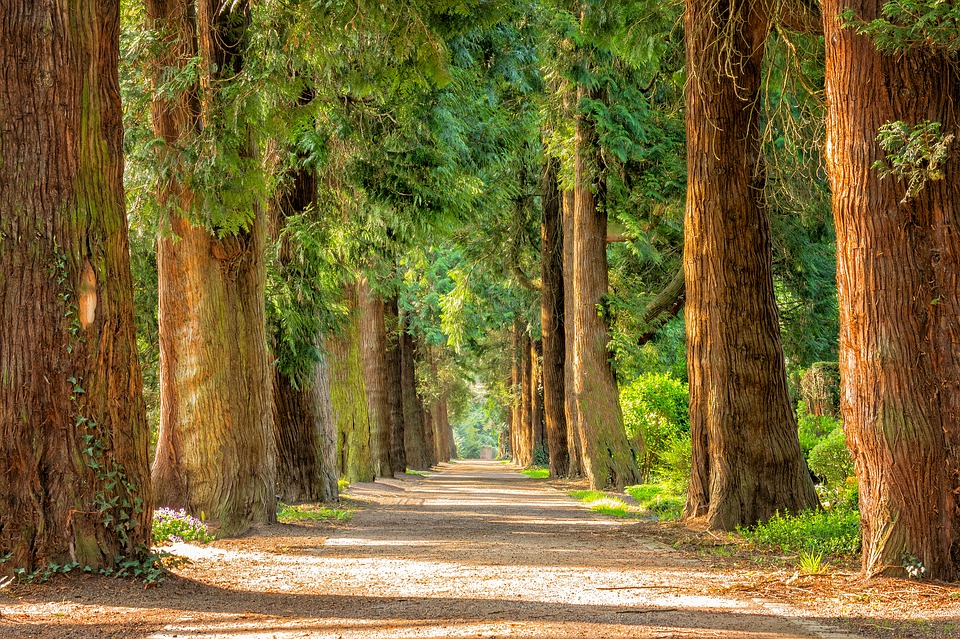The subject of green spaces and urban forestry has been an important topic for decades. While many cities have embraced green spaces, adding parks and trees as a key part of new developments, many areas and cities are still primarily concrete and stone, providing little relief from the elements.
With more and more of the global population living in cities each year, the effects of pollution on an urban population are more clear than ever. Pollution and poor air quality are causing health problems and leading to death for millions of people around the world.
As our cities continue to grow and more people move into crowded places, growing our green spaces in urban areas should be a priority. More and more research is concluding that letting nature back into our cities will have widespread benefits for us and our planet.
Urban Heat Island Effect
The urban heat island effect refers to the process of heat being trapped in built-up areas more than the surrounding areas. Green spaces in cities can mitigate this effect.
The urban heat island effect is largely due to human activity. The heat generated by people, transportation, electricity, and industry gets trapped in narrow roads, concrete, and buildings, unable to escape freely into the atmosphere. The temperatures in urban areas have been recorded to be 3-4°C higher than the surrounding countryside on the same day because of this trapped heat.
Higher temperatures lead to an increase in air conditioner use, using transportation instead of walking, and higher energy consumption, leading to more heat being trapped in a vicious cycle.
This effect also causes damage to the water cycle, as water entering sewers will have a much higher temperature from traveling on sidewalks and roads. This can have a devastating impact on fish and other marine life when the water enters into our ecosystem in rivers, lakes, and streams.
Having ample green spaces in cities can mitigate this effect, as the trees can absorb the carbon dioxide produced, provide shade to cool buildings, pavement, and people, and can absorb warmer rainwater through their roots. Trees on sidewalks, in parks, and even on building roofs can help prevent a city from having a higher temperature than its surrounding rural areas.
With climate change and pollution always being a topic of conversation, the benefits of these green spaces in urban areas cannot be overemphasized.
Green Spaces Benefits for Public Health
There is a growing body of research surrounding the benefits of green spaces on public health. More and more studies are concluding that the availability of green spaces has an extremely positive effect both on our physical and mental health.
Having abundant green spaces in a city provides more opportunity for exercise and outdoor activities, like jogging, walking, and recreation or sports. A lack of physical activity contributes to various diseases and having green space available can help to mitigate this by encouraging outdoor activity. Cities with green spaces often suffer less from the urban heat island effect, making it easier to walk outside and find shade, even on warm days.
Fighting pollution is also a key benefit of green spaces in cities. Air pollution is growing as a direct cause of death around the world, and having green spaces to help mitigate air pollution has a direct effect on our physical health. The less air pollution we breathe in, the healthier we can be.
There have also been studies concluding that there is a direct link to people living longer and green spaces near their home.
There are also many studies concluding that green spaces have an immensely positive effect on our mental health. Multiple effects have been noted by researchers, including improved mood, stress relief, and even reduced symptoms of depression in people that spend time simply viewing nature.
“Forest bathing” is a popular activity in Japan where people spend time in a forest amongst nature and experience the sounds, smells, and sights. It is a practice in meditation, and has reported both mental and physical benefits. Recently, the NHS reported that it will begin prescribing outdoor walks to patients to help them recover physically and mentally from various diseases.
And now, while the world is in the midst of a pandemic, having green spaces is a great place to go to relax, unwind, meditate, and social distance. While some activities are still closed and many people are trying to find ways to see friends and family responsibly, green spaces offer a place to socialize, give the kids some exercise, and do their part in stopping the virus. People who live in areas without accessible green spaces have much less opportunity than those of us who do!
